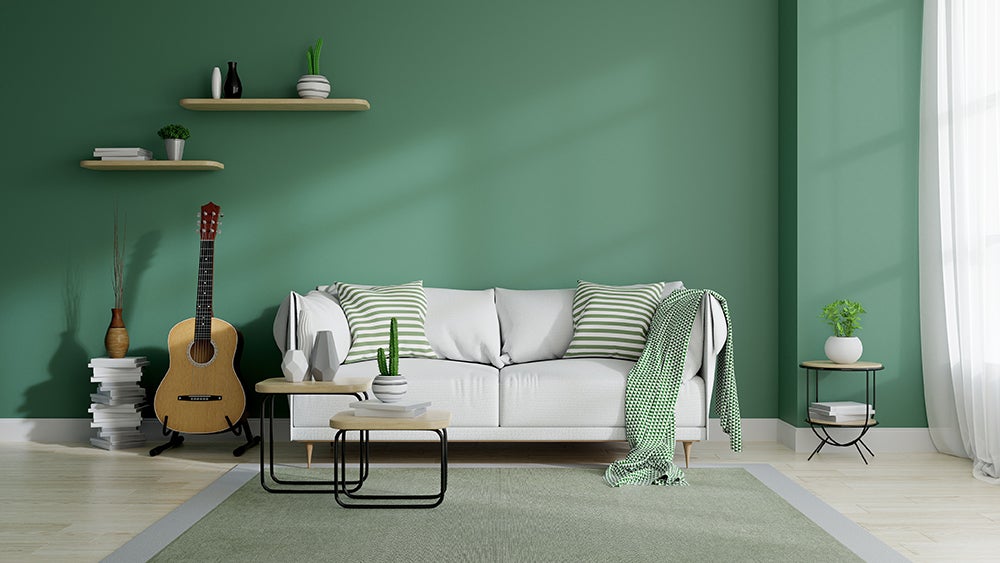When payments solution platform Afterpay launched in the United States in 2018, it focused on millennial-favored fashion and beauty brands like Anthropologie, Buxom, Free People, Madewell and Tarte. But as the service’s expansion coincided with the upswing in pandemic-induced home improvement, major players in the interiors space wanted in, too. With good reason: Afterpay has a stellar track record of introducing debt-averse younger consumers to all kinds of companies, and allowing them to purchase items instantly and pay in four interest-free installments.
One such home retailer who got on board early was Bed Bath & Beyond. “As part of our commitment to being a digital-first, omni-always retailer, we’re constantly on the lookout for ways to make it easier and more convenient to shop with us,” says Dayna Battaglino, the retailer’s payments manager. Bed Bath & Beyond tested the waters digitally first, becoming an Afterpay online partner in November 2020, and then an in-store one this past April. The service is now offered at all Bed Bath & Beyond, Buy Buy Baby and Harmon Face Value locations throughout the United States. “By breaking up purchases into incremental payments, Afterpay increases our customers’ buying power,” explains Battaglino.
The combination of paying over time and immediate gratification is clearly appealing for big-ticket items like sofas and beds, but BNPL services are just as popular with budget-conscious buyers, who can apply to pay over time for products. “Afterpay offers the benefit of traditional credit minus the downside of debt,” says Alexandra Fisher, Afterpay’s vice president of retail. That no-strings convenience resonates with Gen Z and millennial shoppers, many of whom are allergic to the fees and high interest rates of old-school credit cards. According to recent research, the percentage of Gen Z consumers using BNPL plans expanded sixfold between 2019 and 2021. For millennials, the usage more than doubled, to 41 percent, within the same time period.
On a partner company’s dedicated website, consumers can choose Afterpay as their online payment option when checking out, or select it at the register in brick-and-mortar shops. They can also shop directly from Afterpay’s own site and app, where products are categorized and cross-promoted—not just by brand name, but by the best deals, the next holiday, or the gift recipient to spur consumer discovery of partner brands. “Afterpay is not just a payment solution, but a full-funnel marketing partner,” says Fisher of the company’s strategy.
In addition to the campaigns on the website and mobile, Afterpay hosts events, inviting influencers who will further spread the word with their Instagram posts and TikToks. “We have a large social media following in our own right,” says Fisher. “Combine that with the impact of influencers, and the result is millions of impressions.”
For Bed Bath & Beyond, the approach is having a positive impact. “Afterpay bolstered the launch of our owned brands, such as Wild Sage, while also promoting our College Savings Pass,” says Battaglino of the back-to-college campaign that featured Bed Bath & Beyond products in a dorm room makeover. Video of the summer 2021 promotion ran on YouTube, Facebook and Instagram, and was further reinforced by pop-up shops throughout Southern California that celebrated the return to classrooms following the remote learning of the previous academic year. “The marketing support was amazing,” adds Battaglino. “Afterpay’s ideas help drive our programs and position our banners.”
The Container Store, Le Creuset and Wayfair are among Afterpay’s other brands in the home and lifestyle vertical—one that Fisher predicts will only continue to grow. “Homes have become offices, sanctuaries—all the things,” she says. “It’s one of our most active categories, with purchases up 49 percent year over year.” And while online shopping may be second nature for younger consumers, the constraints of the pandemic have brought all different demographics to the Afterpay app. “We’ve seen a big shift to e-commerce across the board [as ]people at any age see the value in buy now, pay later,” says Fisher.
Participating merchants enjoy equivalent value propositions. Research conducted by Accenture reveals that in 2021, Afterpay propelled $4.5 billion in net benefits to merchants, including $8.2 billion in incremental sales for retailers attributed in large part to improved online checkout conversion rates, boosted customer baskets and a rise in repeat purchases. “There’s a lift in the average order value,” says Fisher. Confident in their ability to pay off their purchase over time, shoppers will “buy two items instead of one.”
Battaglino agrees: “As customers decorate their homes, and buy gifts for family and friends, the appeal of Afterpay will keep trending upward.”
This story is a paid promotion and was created in partnership with Afterpay. Late fees and eligibility criteria may apply for all transactions; full terms are available here.





























